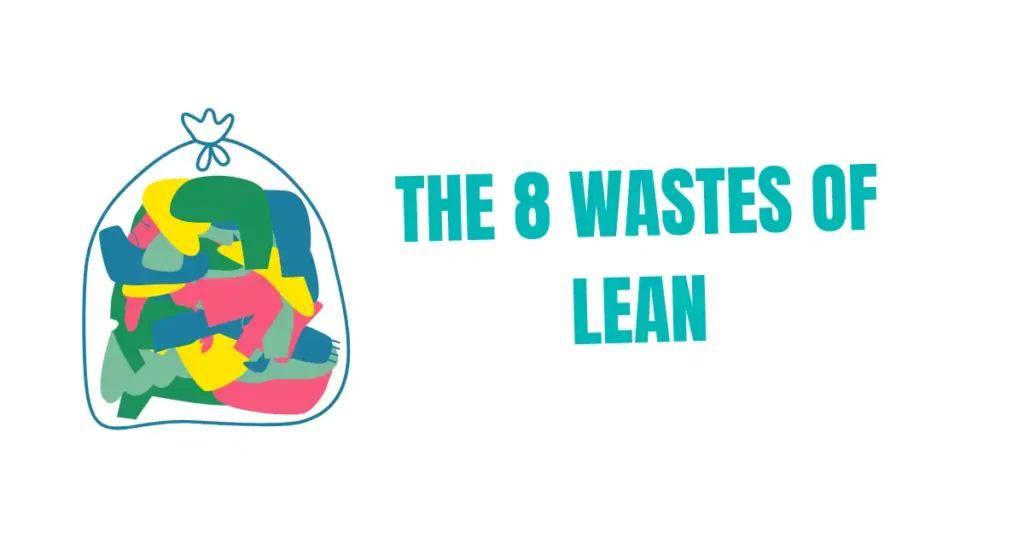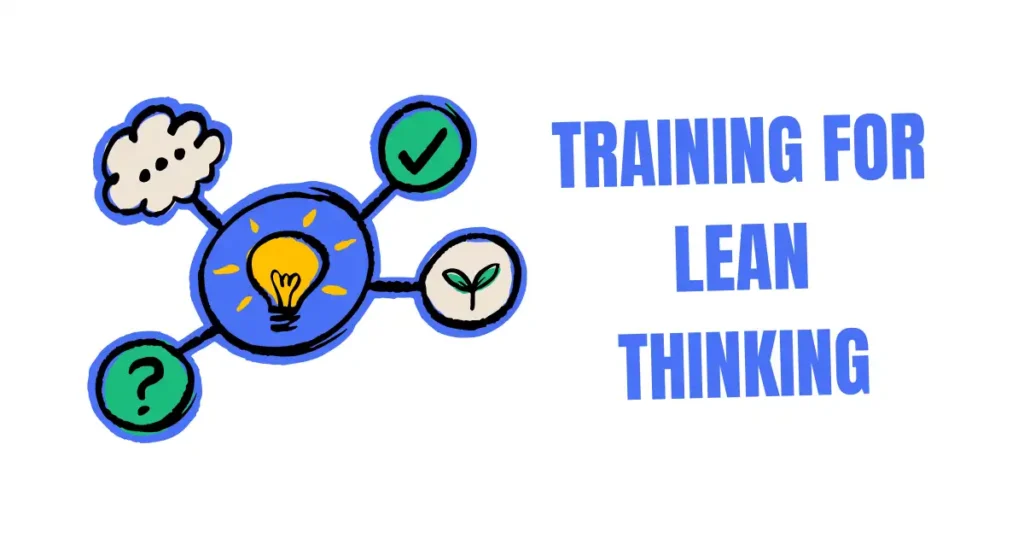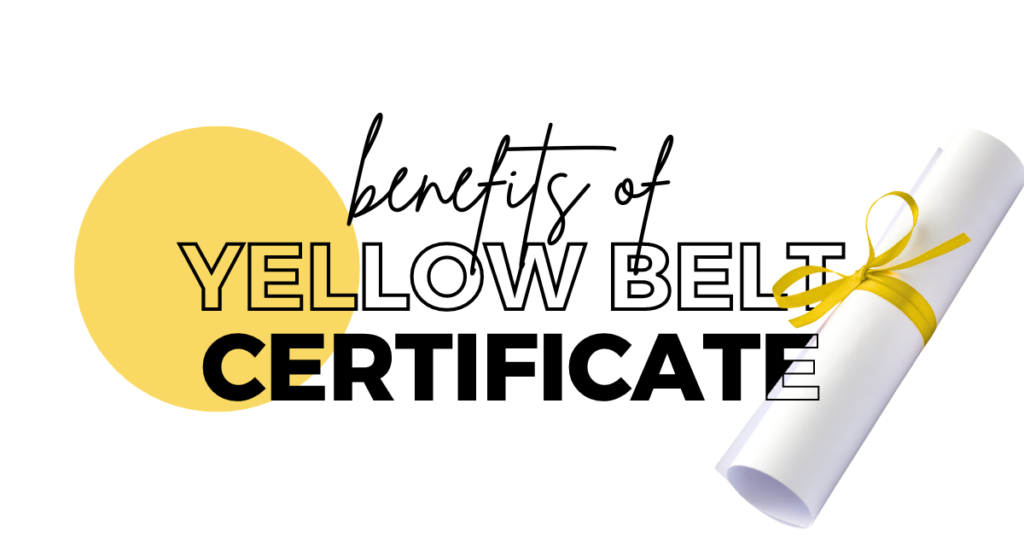Table of Contents
Why “Lean Ninjas”?
Is your team always busy but never really moving forward? You’re not alone. Most businesses confuse activity with progress. Long meetings, endless reports, and constant emails look productive — but often, they hide waste.
That’s where the idea of a “Lean Ninja” comes in. Not a person in black pajamas — but someone in your team who works with precision. No fluff, no drag. Just clear focus, fast decisions, and clean results.
Lean Ninjas cut out what doesn’t matter. They simplify workflows. They make sure the right work gets done, the right way, at the right time.
This blog shows you how to think like one. We’ll break down lean principles, explain the 8 wastes that kill team efficiency, and show how Lean Six Sigma training can turn average teams into sharp, high-performing units.
No jargon. No theory dumps. Just practical lessons your business can use now to work smarter — not harder.
The Lean Ninja Mindset
A Lean Ninja doesn’t move unless it matters. Every task, every meeting, every click — it all needs a purpose.
This mindset isn’t about doing more. It’s about doing what counts.
1. Purpose-Driven
Lean Ninjas don’t just “stay busy.” They ask, “Does this create value for the customer?” If not, it’s noise. According to a McKinsey report, employees spend up to 28% of their workweek on emails and another 20% in meetings — much of it unnecessary. Lean thinkers don’t let that happen. They protect their time and focus on work that moves the needle.
2. Aware of Waste
Wasted effort hides in plain sight — long handoffs, duplicated work, unclear processes. A Lean Ninja spots these fast. They don’t wait for a manager to flag inefficiency. They notice it, call it out, and take action.
Lean thinking calls this “Muda”, a Japanese word for waste. Toyota, the pioneer of lean, built a whole system around reducing it — and went from near bankruptcy to dominating the global auto industry.
3. Always Improving
Lean Ninjas don’t settle. If something takes 10 steps, they ask how to do it in 5. If a task feels slow, they find out why.
This is called Kaizen — continuous improvement. It’s not about big changes. It’s about daily habits. Fixing one small thing at a time. Over a year, that adds up to real progress.
A Lean Ninja doesn’t need a title. They need the mindset. Purpose. Awareness. Growth. That’s the core.
The 8 Wastes of Lean: Common Business Pitfalls

Even great teams lose time and energy to hidden waste. Lean identifies eight types of waste that slow things down, create frustration, and cost money. Spotting them is the first step to fixing them.
1. Defects
Mistakes, bugs, or incomplete work. They lead to rework, delays, and lost trust.
Example: A sales report built from outdated data gets redone before a client meeting. That’s time burned.
Takeaway: If you’re fixing the same issue twice, it’s not a glitch — it’s a system problem.
2. Overproduction
Doing more than necessary, too soon.
Example: Developers build features no one asked for, “just in case.” Later, they get scrapped.
Takeaway: If you’re building extras before they’re needed, that’s not proactive — it’s waste.
3. Waiting
Delays between steps, people, or approvals.
Example: A designer waits three days for feedback that takes five minutes to give. The project stalls.
Takeaway: If your work is ready but stuck in limbo, that’s wasted momentum.
4. Non-Utilized Talent
Skills left on the table.
Example: A customer support rep with great data skills is never asked to help improve the ticket system.
Takeaway: If you’re not using people’s full potential, you’re holding your team back.
5. Transportation
Unnecessary movement of work or information.
Example: Files pass through five inboxes when one shared folder would do.
Takeaway: If work keeps bouncing around, simplify the route.
6. Inventory
Work or assets sitting unused.
Example: A backlog of blog drafts that were never published. Or content waiting for final sign-off that never comes.
Takeaway: If it’s just sitting there, it’s not value — it’s weight.
7. Motion
Wasted effort within a task.
Example: Switching between five apps just to log one issue. Or digging through threads to find basic info.
Takeaway: If people are constantly hunting, clicking, or switching tools — that’s lost energy.
8. Extra Processing
Doing more than needed to “look thorough.”
Example: Creating a 20-slide deck when a 3-bullet summary would be clearer.
Takeaway: If you’re overcomplicating to seem smart, you’re just adding noise.
These wastes drain time, hurt morale, and cost money. But once you spot them, you can start cutting them out — fast.
Get more in-depth insight, practical demonstration and real-world case studies from our The 8 Wastes of Lean Course
How to Spot Waste in Your Own Team
You can’t fix what you don’t see. Most waste hides in plain sight — buried in routines, habits, and tools your team uses every day.
Start with one simple question:
“What do we keep doing that no one actually needs?”
Ask it in meetings. Ask it in 1:1s. Ask it about every report, tool, and recurring task.
Use Value Stream Mapping
If you want clarity fast, use a value stream map. It’s a simple way to visualize the steps your team takes to deliver a product or service — from request to result.
You map:
- Every step in the process
- Who’s involved
- How long each step takes
- Where delays or bottlenecks happen
Once it’s on paper, waste becomes obvious. You’ll spot steps that add zero value, handoffs that cause delays, or gaps where no one owns the outcome.
Where to Look for Waste
Slack & Emails
- Are people answering the same questions over and over?
- Are updates getting buried in threads?
If your team needs a daily hunt just to stay informed, that’s wasted motion.
Meetings
- Do meetings have clear agendas and owners?
- Are decisions made, or just discussed?
A Harvard Business Review survey found 71% of managers said meetings are unproductive. Don’t let that be your team.
Reports
- Is anyone reading the dashboards you’re building?
- Are you reporting because it helps, or just because it’s always been done?
If a report doesn’t help someone take action, it’s not a report — it’s noise.
Workflows & Tools
- Are people entering the same data in three systems?
- Are approvals creating delays with no added value?
Small inefficiencies add up. One extra step repeated across a team, every day, becomes a major time sink.
Spotting waste doesn’t require a consultant. It just requires honest questions and clear eyes.
Training for Lean Thinking: Real Skills, Real Results

Tools and methods are only useful if your team knows how to use them. That’s where Lean Six Sigma (LSS) comes in.
LSS combines two powerful ideas:
- Lean: Eliminate waste, streamline processes
- Six Sigma: Reduce errors and improve quality through data
Together, they help teams spot problems faster, fix root causes, and build smarter systems.
Why It Matters
Process issues aren’t always obvious. Without training, teams react to symptoms — not causes. LSS gives people the mindset and tools to:
- Think critically about how work gets done
- Measure what’s slowing them down
- Fix it in a way that sticks
This isn’t theory. According to the American Society for Quality, companies using Lean Six Sigma see cost savings of 1.5%–3% of revenue per project, on average.
The Belts: Clear Skills at Each Level
Like martial arts, Lean Six Sigma uses a belt system to show mastery:
Yellow Belt
- Intro level for all team members
- Covers basic concepts like waste types, process mapping, and problem-solving tools
- Great for frontline staff who want to improve daily work
Get Certified: Lean Six Sigma Yellow Belt Course
Green Belt
- For team leads, project managers, analysts
- Teaches how to run improvement projects, use data, analyze root causes, and drive change
- Balances theory with hands-on tools (like DMAIC: Define, Measure, Analyze, Improve, Control)
Black Belt
- Advanced training for change leaders
- Focuses on complex problem-solving, leading cross-functional teams, and coaching others
- Often takes on full-time improvement roles
Upskill the Team, Not Just the Bosses
Too often, only managers get trained. But waste happens at every level. Empowering the whole team builds a culture of improvement from the ground up.
Every department — ops, sales, finance, marketing — can benefit from Lean thinking. Because wherever there’s a process, there’s a chance to make it better.
Training builds more than skill. It creates proactive, problem-solving teams that don’t wait for direction — they fix what’s broken.
Real Example: Lean Thinking in Action
Let’s make this real with a simple example.
The Problem: A Marketing Team Stuck in Loops
A mid-sized tech company had a marketing team of 12. Every campaign involved multiple rounds of approvals, unclear briefs, and last-minute changes. Despite everyone working hard, launches were always late — and morale was low.
The root issues?
- Campaign briefs were vague
- Feedback came too late (and too often)
- Content sat in limbo waiting for executive sign-off
- Team members were duplicating work without realizing it
The Fix: Lean Thinking + Basic LSS Tools
They brought in Lean training (Yellow Belt level) for the whole team and ran a 3-week improvement sprint. Here’s what changed:
- Mapped the campaign workflow — spotted that the same content was reviewed by 4 people in different formats
- Introduced a shared brief template — everyone used the same info from day one
- Cut approvals from 4 layers to 2 — added rules for when exec input was actually needed
- Standardized feedback cycles — no more chasing comments across emails and Slack
The Result:
- Campaign delivery time dropped by 37%
- Team satisfaction scores improved by 22%
- Fewer meetings, clearer roles, and faster launches
“We didn’t work harder. We just worked better,” said their marketing lead.
This wasn’t a massive restructuring. It was a simple mindset shift: stop tolerating waste, and start fixing it with the tools they already had.
That’s Lean in action.
Make It Real: How to Start Applying Lean Today
You don’t need a big budget or a consultant to apply Lean. You just need clarity, curiosity, and a plan.
Here’s a simple 5-step framework to help your team get started:
1. Identify Value — From the Customer’s Viewpoint
Ask: “What does the customer actually want?”
Not what you think they want — what they’re paying for, expecting, or needing.
Example: A customer might want faster support, not longer documentation.
This step sets your direction. Everything that doesn’t support that value is up for review.
2. Map the Steps to Deliver That Value
Create a value stream map. List every step your team takes to deliver the end result — emails, approvals, handoffs, tools.
Don’t overthink it. Sticky notes or a whiteboard work fine.
This will give you a full picture of how things really flow (or don’t).
3. Spot the Waste
Now scan your map for:
- Delays between steps
- Duplicate work
- Back-and-forth loops
- Unused reports or outdated tools
Mark anything that feels slow, unclear, or unnecessary.
4. Test One Improvement
Pick one small fix — not ten. Tweak a workflow, cut a redundant approval, or simplify a form.
Measure the impact: Does it save time? Reduce errors? Make things clearer?
Start small, but start.
5. Make Improvement a Habit
Lean isn’t a one-time cleanup. It’s a culture of questioning what’s normal.
Build in regular reviews: weekly retros, quick check-ins, or a shared board for process feedback.
The goal: Progress over perfection — one improvement at a time.
This approach works in any team, any industry. Because Lean isn’t about being perfect — it’s about being better than yesterday.
Ready to start your Lean Journey? The Lean Management: Certification Course & Process Improvement: Lean out your operation are the 2 perfect courses we have for you.
Check out the “What you’ll learn” and “Course content” sections to decide which course is the perfect fit for you.
Closing: Lean Isn’t a Buzzword — It’s a Shift
Most teams aren’t broken. They’re just buried in the wrong work.
The answer isn’t more effort. It’s better focus.
Lean thinking helps teams do less of what doesn’t matter — and more of what does. It clears the clutter, reduces waste, and makes room for real progress.
You don’t need to overhaul everything overnight. Just start by looking closely at how your team works. Ask hard questions. Make small fixes. Train your people to spot problems before they grow.
Because when your team knows how to work better, they don’t need to work harder.
That’s the shift. That’s the power of Lean.











